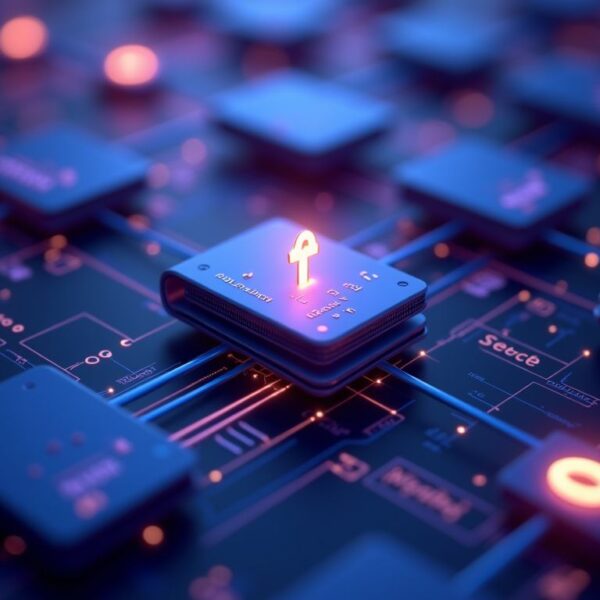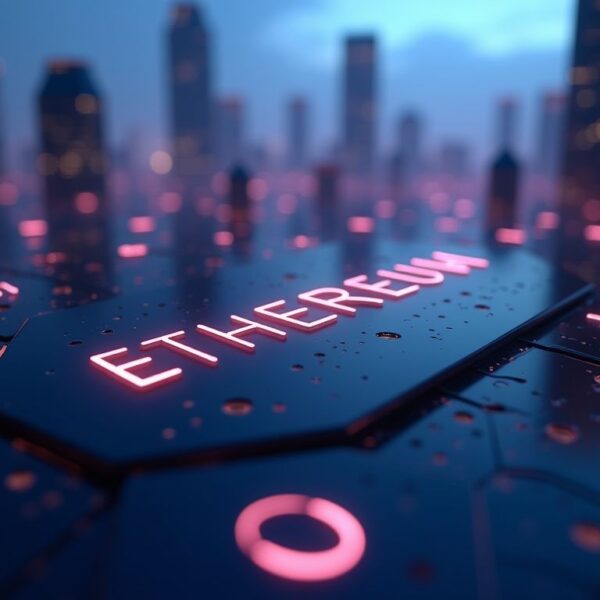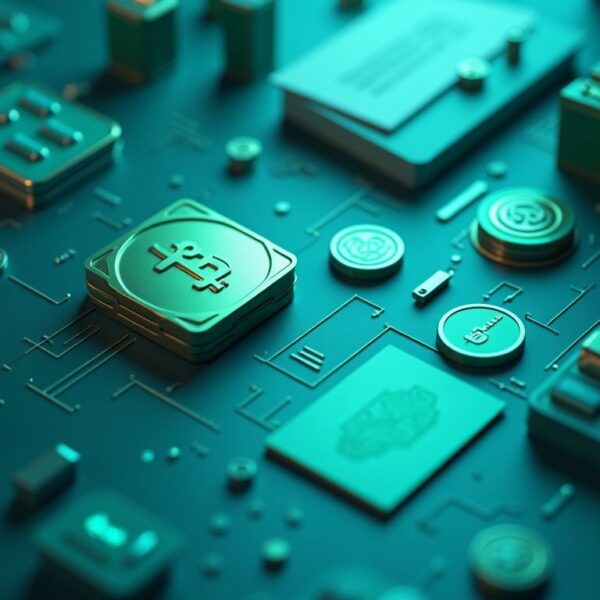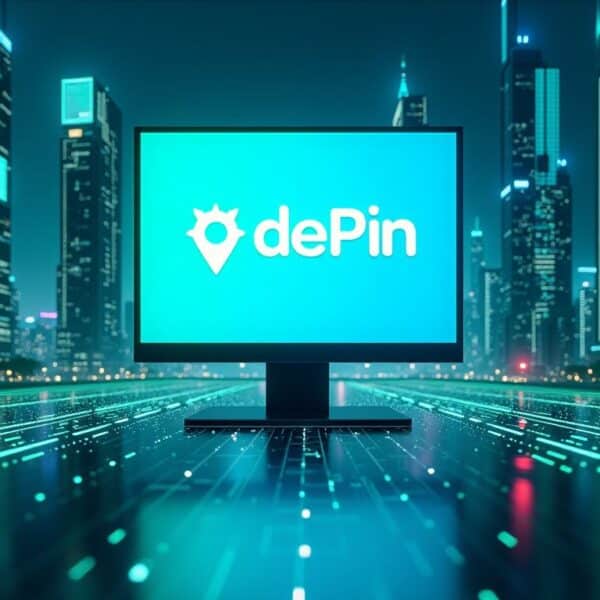As the world of finance undergoes a profound transformation, the emergence of Decentralized Finance (DeFi) platforms has sparked a new wave of innovation. DeFi 3.0, the latest iteration of this revolutionary ecosystem, promises to redefine the future of financial services. This cutting-edge landscape is poised to reshape the way we access, manage, and interact with our financial assets, harnessing the power of decentralized finance trends, smart contracts, and next-gen DeFi solutions.
The journey of DeFi has been one of remarkable evolution, from the groundbreaking DeFi 1.0 platforms to the more sophisticated DeFi 2.0 innovations. Now, DeFi 3.0 stands at the forefront, introducing a paradigm shift that transcends the limitations of its predecessors. This new era of decentralized finance is ushering in a future where financial transactions, asset management, and even governance are reimagined through the lens of blockchain technology and decentralized protocols.
Key Takeaways
- DeFi 3.0 represents the latest evolution in the decentralized finance ecosystem, building upon the foundations of DeFi 1.0 and DeFi 2.0.
- This new era of DeFi promises to unlock innovative solutions that enhance security, trust, interoperability, and community participation.
- DeFi 3.0 platforms leverage cutting-edge cryptography, advanced smart contracts, and decentralized governance models to redefine the financial landscape.
- The integration of DeFi 3.0 with Web3 initiatives aims to create a more equitable and transparent internet economy.
- Navigating the regulatory challenges will be crucial as DeFi 3.0 continues to evolve and reshape the future of finance.
Understanding the Evolution of DeFi
The world of decentralized finance (DeFi) has undergone a remarkable transformation, tracing a path from its humble beginnings in DeFi 1.0 to the innovative landscape of DeFi 3.0. This evolution has been driven by a relentless pursuit to unlock new possibilities and redefine the boundaries of finance.
From DeFi 1.0 to DeFi 2.0: Tracing the Journey
DeFi 1.0 was marked by the rise of decentralized lending and borrowing platforms, which leveraged smart contracts to enable peer-to-peer financial transactions. These platforms, such as Compound and Aave, laid the foundation for a more inclusive and transparent financial ecosystem. However, as the decentralized finance trends gained momentum, the need for more sophisticated solutions became apparent.
The Emergence of DeFi 3.0: A Paradigm Shift
DeFi 3.0 represents a significant leap forward, ushering in a new era of innovation and possibilities. This phase is characterized by the development of advanced smart contracts, which have become the backbone of DeFi protocols. These enhanced smart contracts not only provide greater security and reliability but also pave the way for the creation of more complex financial instruments and decentralized applications.
The transition from DeFi 2.0 to DeFi 3.0 has been a remarkable journey, and it continues to unfold with the emergence of cutting-edge technologies and the unwavering dedication of the DeFi community. As the ecosystem evolves, the promise of a more equitable and accessible financial future becomes increasingly tangible.
DeFi 3.0 Innovations: Unlocking New Possibilities
As the decentralized finance (DeFi) landscape continues to evolve, DeFi 3.0 platforms are introducing groundbreaking innovations that are reshaping the future of the industry. At the heart of these advancements are smart contracts, which have become the backbone of next-gen DeFi protocols.
One of the key innovations in DeFi 3.0 is the development of more sophisticated and secure smart contracts. These self-executing contracts are designed to automatically enforce the terms of an agreement, eliminating the need for intermediaries and reducing the risk of human error or manipulation. With enhanced security measures and cutting-edge cryptographic techniques, DeFi 3.0 smart contracts offer an unparalleled level of transparency and trust, paving the way for a new era of decentralized financial services.
In addition to improved smart contracts, DeFi 3.0 platforms are also exploring innovative solutions to address long-standing challenges in the DeFi ecosystem. From enhancing interoperability between different blockchain networks to implementing scalable and efficient transaction processing, these platforms are pushing the boundaries of what’s possible in the next-gen DeFi landscape.
| Feature | DeFi 1.0 | DeFi 2.0 | DeFi 3.0 |
|---|---|---|---|
| Smart Contracts | Basic | Improved | Sophisticated and Secure |
| Interoperability | Limited | Developing | Enhanced |
| Scalability | Challenging | Addressed | Optimized |
| Privacy | Basic | Improving | Privacy-Preserving |
As the DeFi ecosystem continues to evolve, the innovations introduced in DeFi 3.0 hold the potential to unlock new possibilities for decentralized finance, empowering users with greater security, accessibility, and control over their financial assets.
Enhancing Security and Trust with Advanced Smart Contracts
As the next generation of decentralized finance, DeFi 3.0 platforms are raising the bar when it comes to security and trust. At the heart of this evolution are advanced smart contracts that leverage cutting-edge cryptographic techniques to ensure the integrity and reliability of these crucial financial agreements.
Secure by Design: Leveraging Cutting-Edge Cryptography
The foundation of DeFi 3.0’s security lies in the design of its smart contracts. These self-executing digital contracts now incorporate the latest cryptographic advancements, such as zero-knowledge proofs and homomorphic encryption, to enhance transparency and privacy without compromising on security.
Zero-knowledge proofs, for instance, allow users to verify the validity of a transaction or smart contract without revealing any sensitive information. This protects user privacy while maintaining the immutable and verifiable nature of smart contracts and next-gen DeFi protocols.
Homomorphic encryption, on the other hand, enables complex computations to be performed on encrypted data, ensuring that sensitive financial information remains secure even during processing. This technology is crucial for building truly trustless and transparent DeFi platforms.
| Cryptographic Technique | Key Benefit |
|---|---|
| Zero-Knowledge Proofs | Preserves user privacy while ensuring transparency |
| Homomorphic Encryption | Enables secure computation on encrypted data |
By integrating these cutting-edge cryptographic methods, DeFi 3.0 platforms are setting a new standard for security and trust in the decentralized finance ecosystem. As the industry continues to evolve, these advanced smart contracts and next-gen DeFi solutions will play a crucial role in unlocking the full potential of the decentralized finance revolution.
Interoperability: Bridging the Divide Between Blockchains
In the dynamic world of decentralized finance (DeFi) 3.0, the ability to seamlessly connect and interact across different blockchain networks has become a crucial priority. Interoperability, the concept of enabling smooth cross-chain communication and data exchange, is driving the next-gen DeFi trends forward.
Historically, the siloed nature of blockchain ecosystems has hindered the full realization of DeFi’s potential. DeFi 3.0 pioneers are now spearheading innovative solutions to bridge this divide, unlocking new opportunities for users and developers alike.
- Cross-Chain Bridges: Advanced protocols are facilitating seamless asset transfers between disparate blockchain networks, allowing users to access a broader range of DeFi services and products.
- Interoperable Protocols: Next-generation DeFi platforms are designed with inherent interoperability, enabling users to move seamlessly between different chain-specific applications and services.
- Decentralized Oracles: Secure and reliable data feeds that can aggregate information from multiple blockchains are empowering DeFi 3.0 applications to make informed decisions and execute transactions across chains.
“Interoperability is the key to unlocking the true potential of decentralized finance. As the DeFi ecosystem continues to evolve, breaking down the barriers between blockchains will be essential for driving mainstream adoption and innovation.”
By fostering greater interoperability, the DeFi 3.0 landscape is poised to offer users a more unified and interconnected experience, paving the way for a future where decentralized finance trends transcend the boundaries of individual blockchain networks.
Decentralized Governance: Empowering Community Participation
As the decentralized finance (DeFi) industry continues to evolve, the concept of decentralized governance has emerged as a key pillar of the next-gen DeFi landscape. Gone are the days of centralized decision-making; DeFi 3.0 is ushering in a new era of transparency and inclusivity, where community members actively shape the future of these innovative financial platforms.
On-Chain Governance: A Transparent and Inclusive Approach
The rise of on-chain governance models in DeFi has empowered users to participate directly in the decision-making process. Through the use of blockchain-based voting mechanisms, community members can now voice their opinions, debate proposals, and have a tangible impact on the direction of the protocols they interact with. This shift towards on-chain governance has fostered a sense of ownership and engagement, ensuring that the decentralized finance trends are shaped by the very people who depend on them.
The benefits of this approach are manifold:
- Increased transparency: All governance decisions are recorded on the blockchain, providing a public and immutable record of the decision-making process.
- Inclusive participation: Community members, regardless of their stake or influence, have an equal say in shaping the future of the protocol.
- Rapid iteration: Decentralized governance allows for quick and agile decision-making, enabling DeFi platforms to adapt to the ever-evolving market conditions.
As the next-gen DeFi ecosystem continues to mature, the role of decentralized governance will only become more crucial. By empowering the community, DeFi 3.0 protocols are setting the stage for a more democratic and responsive financial landscape, where users have a direct say in the innovations that shape their digital future.
“Decentralized governance is the key to unlocking the true potential of DeFi. By giving the community a voice, we’re creating a more responsive and accountable financial system.”
Scalability Solutions: Overcoming the Blockchain Trilemma
As the decentralized finance (DeFi) ecosystem continues to evolve, the challenge of achieving scalability without compromising security or decentralization has become a pressing concern. This conundrum, known as the “blockchain trilemma,” has been a significant hurdle for the widespread adoption of smart contracts and next-gen DeFi applications.
However, the DeFi 3.0 landscape is witnessing the emergence of innovative scalability solutions that aim to address this challenge head-on. These cutting-edge approaches are paving the way for more efficient and accessible decentralized finance applications, unlocking new opportunities for users and developers alike.
Layer-2 Solutions: Scaling Without Sacrificing Decentralization
One of the promising scalability solutions in the DeFi 3.0 ecosystem is the development of Layer-2 technologies. These off-chain scaling solutions operate on top of the main blockchain, allowing for faster transactions and higher throughput without compromising the underlying network’s security or decentralization. By offloading computationally intensive tasks to these secondary layers, DeFi platforms can achieve the necessary scalability to support a growing user base and more complex financial applications.
Sharding and Parallelization: Increasing Blockchain Capacity
Another approach to addressing the blockchain trilemma is the implementation of sharding and parallelization techniques. Sharding, for instance, divides the blockchain into multiple partitions, or “shards,” allowing for parallel processing of transactions and reducing the computational burden on the network. This innovative strategy can significantly boost the overall throughput and scalability of DeFi platforms, paving the way for a more seamless and efficient user experience.
“The key to unlocking the full potential of DeFi 3.0 lies in our ability to tackle the scalability challenge head-on, without compromising the core principles of security and decentralization.”
As the DeFi ecosystem continues to evolve, the integration of these scalability solutions will be crucial in driving the widespread adoption and utility of smart contracts and next-gen DeFi applications. By overcoming the blockchain trilemma, DeFi 3.0 platforms can provide users with the speed, efficiency, and accessibility needed to realize the true transformative power of decentralized finance.
Privacy-Preserving DeFi: Protecting User Anonymity
As the decentralized finance (DeFi) ecosystem continues to evolve, the need for robust privacy protections has become increasingly paramount. Emerging trends in next-gen DeFi aim to address this crucial concern by leveraging innovative privacy-enhancing technologies, such as zero-knowledge proofs (ZKPs).
Zero-Knowledge Proofs: Enabling Privacy-Centric DeFi
Zero-knowledge proofs are a groundbreaking cryptographic technique that allows users to verify the validity of a statement without revealing any additional information. In the context of DeFi 3.0, ZKPs are being employed to enable privacy-centric financial transactions and protect user anonymity.
- ZKPs enable users to execute DeFi protocols and access services without exposing their personal data or transaction details.
- By leveraging the power of zero-knowledge proofs, DeFi platforms can now provide users with the ability to engage in lending, borrowing, and other financial activities while maintaining their privacy.
- This technology also enables the development of decentralized exchanges (DEXs) that can facilitate trades without compromising user identities.
The integration of zero-knowledge proofs in next-gen DeFi platforms represents a significant step forward in addressing the privacy concerns that have long plagued the decentralized finance ecosystem. As the DeFi 3.0 landscape continues to evolve, we can expect to see even more innovative privacy-preserving solutions emerge, further enhancing the overall user experience and driving the widespread adoption of decentralized finance trends.
DeFi 3.0 and Web3: Redefining the Internet Economy
The emergence of decentralized finance (DeFi) 3.0 is not just a significant advancement in financial technology; it is a transformative force that is redefining the very fabric of the internet economy. As the next-gen DeFi ecosystem continues to evolve, it is aligning seamlessly with the rise of Web3, the decentralized and user-centric vision for the future of the internet.
At the heart of this convergence lies a shared ethos of empowering individuals, fostering transparency, and challenging the status quo. DeFi 3.0 platforms are leveraging the power of blockchain technology and smart contracts to create innovative financial solutions that are more accessible, secure, and inclusive than traditional finance. Meanwhile, Web3 is pioneering a new era of user-owned and decentralized applications, where the power and control are placed firmly in the hands of the people.
The synergies between DeFi 3.0 and Web3 are manifold. Both ecosystems are driven by the principles of decentralization, transparency, and user autonomy. By integrating these transformative technologies, the internet economy is poised to undergo a fundamental shift, unlocking a wealth of new opportunities for individuals, developers, and businesses alike.
From decentralized lending and borrowing platforms to novel forms of decentralized governance, the convergence of DeFi 3.0 and Web3 is redefining how we interact with and participate in the digital economy. As these two cutting-edge domains continue to evolve in tandem, the future of the internet is being written, one that promises greater financial inclusion, increased user sovereignty, and a more equitable distribution of power and wealth.
“The marriage of DeFi 3.0 and Web3 is a watershed moment, ushering in a new era of internet-based economic activity that is more transparent, secure, and empowering for all.”
Regulatory Challenges and the Future of DeFi 3.0
As the decentralized finance (DeFi) ecosystem continues to evolve, navigating the regulatory landscape has become a crucial challenge for the next-gen DeFi platforms. Policymakers and regulators worldwide are grappling with the task of striking a balance between fostering innovation and ensuring consumer protection. The rapid growth and complexity of the DeFi 3.0 landscape have prompted heightened scrutiny, with concerns ranging from market manipulation to illicit activities.
Regulatory bodies are actively working to develop frameworks that can effectively govern these decentralized systems without stifling the potential of the technology. Initiatives like the European Union’s proposed Markets in Crypto-Assets (MiCA) regulation and the U.S. government’s efforts to provide guidance on the classification and treatment of digital assets are steps in the right direction. These regulatory efforts aim to enhance transparency, mitigate risks, and establish clear guidelines for the DeFi 3.0 ecosystem.
However, the decentralized and borderless nature of DeFi 3.0 platforms presents unique complexities for regulators. Achieving global harmonization and interoperability of regulatory frameworks remains a significant challenge. As the industry continues to evolve, it will be crucial for policymakers, regulators, and the DeFi community to collaborate closely to navigate this dynamic landscape and unlock the full potential of decentralized finance trends.
FAQ
What is DeFi 3.0, and how does it differ from previous iterations?
DeFi 3.0 represents the latest evolution in decentralized finance, building upon the foundations of DeFi 1.0 and DeFi 2.0. It introduces a paradigm shift, with a focus on enhanced security, interoperability, decentralized governance, and scalability solutions to address the limitations of earlier DeFi platforms.
How are advanced smart contracts shaping the DeFi 3.0 landscape?
DeFi 3.0 platforms leverage cutting-edge smart contract technology to enhance security and reliability. These smart contracts are designed with robust, security-focused features, leveraging advanced cryptographic techniques to protect user assets and ensure the integrity of financial transactions.
What role does interoperability play in the DeFi 3.0 ecosystem?
Interoperability is a crucial aspect of DeFi 3.0, enabling seamless cross-chain interactions and the ability to bridge different blockchain networks. This allows for greater flexibility, access to a wider range of decentralized applications, and the unlocking of new opportunities for both users and developers.
How does decentralized governance empower the DeFi 3.0 community?
DeFi 3.0 platforms are often designed with on-chain governance models, where community members actively participate in the decision-making process. This fosters transparency, inclusivity, and decentralized control over the platform’s development, aligning with the core principles of decentralization.
What scalability solutions are being explored in the DeFi 3.0 space?
DeFi 3.0 platforms are addressing the blockchain trilemma of achieving security, decentralization, and scalability simultaneously. Through the implementation of various scalability solutions, such as layer-2 scaling, sharding, and other innovative techniques, these platforms aim to provide high-throughput, cost-effective, and accessible decentralized finance applications.
How does DeFi 3.0 integrate with the emerging Web3 ecosystem?
DeFi 3.0 and Web3 are closely intertwined, as they both aim to redefine the internet economy. DeFi 3.0 platforms leverage Web3 technologies, such as decentralized applications and self-sovereign user data, to create a more equitable and transparent financial system. This convergence unlocks new opportunities for users, developers, and businesses to participate in the evolving digital economy.
What are the key regulatory challenges facing the DeFi 3.0 ecosystem?
The rapid growth and innovation in the DeFi 3.0 space have outpaced regulatory frameworks, presenting various challenges. Policymakers and regulators are working to strike a balance between fostering innovation and ensuring appropriate consumer protections, compliance, and risk management. Navigating this evolving landscape is critical for the sustainable development of decentralized finance.

















































